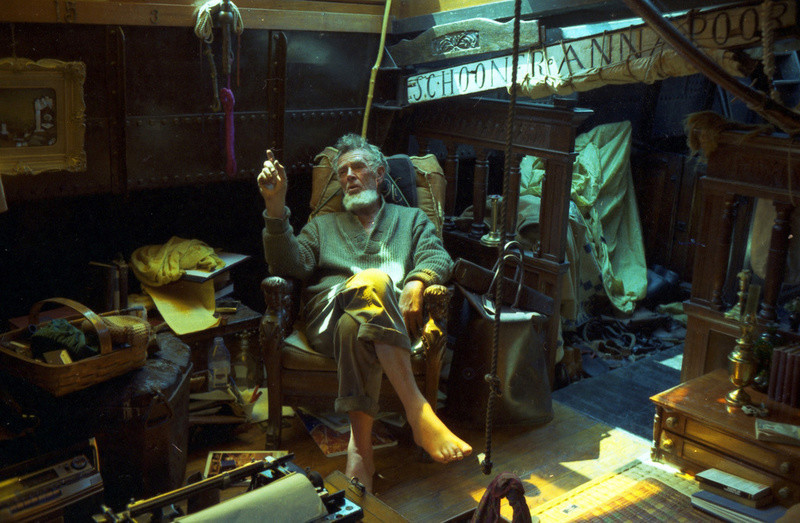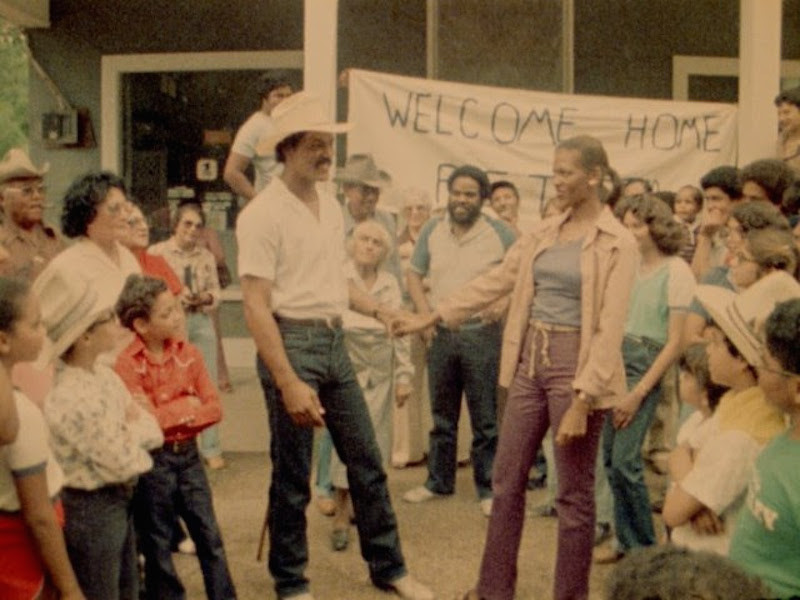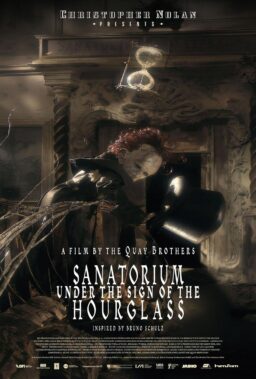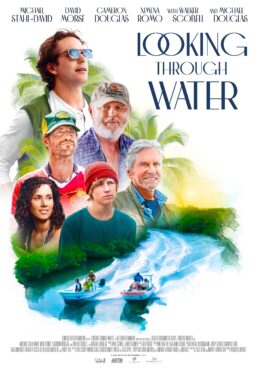MOMA’s annual To Save and Project festival programs newly preserved and restored films from all around the world. These films reflect a variety of diverse cultures and traditions, as well as myriad global industry practices, which frequently go unnoticed by Western audiences. MOMA’s storied dedication to exhibiting these frequently rare, often unseen works from talented filmmakers across the globe is worthy of celebration and acclaim. Simply put, it’s a necessary service to expand the mind and broaden the palette of the American cinephile.
<span class="s1" <the="" 16The 16th edition of To Save and Project featured a tribute to director Barbet Schroeder’s documentary work, new restorations of early Ernst Lubitsch and F.W. Murnau films, as well a smattering of selections from the British Film Institute and the Biograph Collection at MOMA. The festival also presented a history of British animation, films by experimental artist Edward Owens, and restorations of mid-century films, including Curtis Harrington’s “Night Tide,” starring a young Dennis Hooper, and Michael Anderson’s “The Quiller Memorandum,” written by Harold Pinter and starring George Segal, Alec Guinness, and Max von Sydow.
As a delegate from RogerEbert.com, I spent the past month exploring the vast lineup of To Save and Project and picked a selection of films worthy of further analysis and discussion. Here is the first of two dispatches from the festival.

In 1982, Horace Jenkins’ first and only feature “Cane River” premiered in New Orleans, Louisiana. Featuring an all-black cast and sporting an all-black crew, “Cane River” traces the burgeoning romance between two young lovers caught within a complex web of family ties and Creole history. The film was set to premiere in New York in February of 1983, and even caught the attention of actor and comedian Richard Pryor, who had seen “Cane River” and actively sought to have it distributed by Warner Bros. Unfortunately, Duplain Rhodes, the executive producer of “Cane River,” rejected Pryor’s deal outright, believing he would lose control of his investment if he handed the film to Hollywood. In December 1982, Jenkins suffered a fatal heart attack. “Cane River” subsequently went unreleased and was effectively lost for over three decades.
In 2013, Sandra Schulberg and her organization IndieCollect, which seeks to preserve American independent film, uncovered a negative of “Cane River” in the vaults of DuArt Film and Video in Manhattan. The Academy Film Archive struck a new 35mm print of the film from a 90-minute negative. Later, IndieCollect, with the generous help of the Roger & Chaz Ebert Foundation, mastered a 4K digital copy. “Cane River” was screened for the first time in 36 years at the New Orleans Film Festival in October 2018, and it finally had its New York premiere at MOMA on January 18th, 2019.
The preservation struggles of “Cane River” are far too common in film history, but Jenkins’ debut feature itself remains a rare beast: an independent drama about black romance that openly contends with intraracial strife. Peter Metoyer (Richard Romain) receives a hero’s welcome upon landing in his rural hometown of Cane River, Louisiana, and it’s not just because he was a college football star all set to go pro. He’s also a scion of a prominent Cane River Creole family who were prosperous landowners that once collaborated with the Confederacy during the Civil War. When Peter visits an estate owned by his ancestors, a local tourist attraction in his town, he meets tour guide Maria Mathis (Tommye Myrick) and they quickly fall for each other. They bond over horse rides, history books, and long walks in Cane River, but their relationship faces a sizable stumbling block. Historically speaking, the Cane River Creoles don’t mix with the dark-skinned, lower-middle-class blacks in the area, like Maria or her family. In fact, the estate where Maria works once housed slaves owned by the Metoyer family.
Peter tells Maria that his family’s problematic history doesn’t reflect upon his personal beliefs or feelings, but he stills harbors pride in his heritage. During his home tour, Peter discovers that a white businessman bought his grandmother’s home under shady terms and seeks out a lawyer to return it to his family. He reads extensively about his family and has no interest in throwing their name under the bus. Meanwhile, Maria might feel awkward about seeing Peter socially given his pedigree, but that’s nothing compared to her mother (Carol Sutton), who believes that Cane River Creoles are no better than an average white racist. Maria chafes against her family’s traditions and longs to finally go to college in New Orleans. To her, Cane River represents limitations and constraints. To Peter, it still retains some halcyon nostalgia and a place for him to flex his creative impulses.
Peter and Maria’s debates about colorism and the weighty shadows of their respective families provide “Cane River” with powerful historical foundation, one that offers a compelling racial twist on a “Romeo and Juliet”-style romance. Jenkins’ film also works beautifully as a travelogue of Louisiana. “Cane River” cinematographer Gideon Manasseh shoots Cane River’s lush landscapes and New Orleans’ bustling city streets with transparent passion for the lived-in details of the areas. Jenkins allows the environments to reflect his subjects’ nuanced, often contradictory feelings about their shared history of the land itself. Most importantly, however, “Cane River” is a fantastic artifact of early-’80s American independent/low-budget cinema. If Jenkins had lived, it’s not too difficult to imagine him garnering critical accolades, even some commercial success, during such a fertile period for indie filmmaking. But even though “Cane River” was lost for decades, its raw subject matter echoes in films of the present day. Barry Jenkins’ debut film “Medicine for Melancholy,” another two-hander love story implicated by race and region, in particular feels like a direct descendant of Horace Jenkins’ orphan feature.

Director Andre de Toth’s best-known work is still the 1953 horror film “House of Wax,” which was the first color 3-D feature to be released by a major American studio and one of the biggest hits of its year. Given that de Toth lost an eye at an early age and thus could not experience 3-D effects, it’s both impressive that he directed the film at all and ironic that he’s associated with it. Still, de Toth is a B-movie man who had a successful Hollywood career in the ’40s and ’50s. This year’s To Save and Project featured a rare screening of de Toth’s “Crime Wave” in a brand-new 35mm print. MOMA advertised the event on their website as “the last chance” one might ever see the film in such a format.
Though “Crime Wave” sports a standard noir premise—two gang members force a reformed ex-con (Gene Nelson) to help them commit a robbery all while a hard-nosed detective (Sterling Hayden) follows their trail—its strengths lie in execution. Crane Wilbur’s script immerses and disorients, especially during first-act introductions, capturing all subjects amidst states of personal or physical disarray. The sublime nighttime photography, courtesy of cinematographer Bert Glennon (who worked with such luminaries as John Ford and Joseph von Sternberg), foregrounds the seediness of not just abandoned streets, but also gas stations and veterinary hospitals. Plus, “Crime Wave” allows its two leads a solid showcase: Nelson sells the plight of a man who knows too well that the American justice system doesn’t hand out second chances without strings attached, and Hayden flexes bitter and aggressive right up until sympathy for an enemy’s moral conviction enters into his heart. The two work within and occasionally transcend their respective archetypes.
MOMA presented “Crime Wave” as a prelude to two self-portraits of Sterling Hayden, both made near the end of his life. The first is “Pharos of Chaos,” directed by Wolf-Eckart Bühler and Manfred Blank, a character study of Hayden as he reflects upon his storied life—his wartime years spent helping the Yugoslav partisans combat fascism during WWII; his famed HUAC testimony and his subsequent lifelong regret for caving to the demands of McCarthy and the FBI; the open disdain and contempt he holds towards the height of his Hollywood career; his late years spent sailing and writing. The second is “The Shipwrecker,” also directed by Wolf-Eckart Bühler, a companion piece to “Pharos of Chaos” and an off-kilter adaptation of Hayden’s memoir, which focuses almost exclusively on the HUAC chapter of his life.
While both films fascinate based on subject matter alone, “Pharos of Chaos” is the more interesting of the two if only because it’s the one that actually features Hayden. It’s nothing short of a delight to watch the aged actor eloquently and drunkenly ramble about his past aboard his own canal barge. Hayden’s alcoholism and hash habit might have amplified his contempt towards himself, but he also goes to great lengths to convey that he’s earned his self-loathing. By his own admission, Hayden committed an unforgivable moral failure in a public forum, which afforded him a successful Hollywood career that he believes to be fraudulent. His post-’60s career was largely defined by sincere regret over his actions. “Pharos of Chaos” showcases how Hayden balances that regret with whimsy and curiosity.












